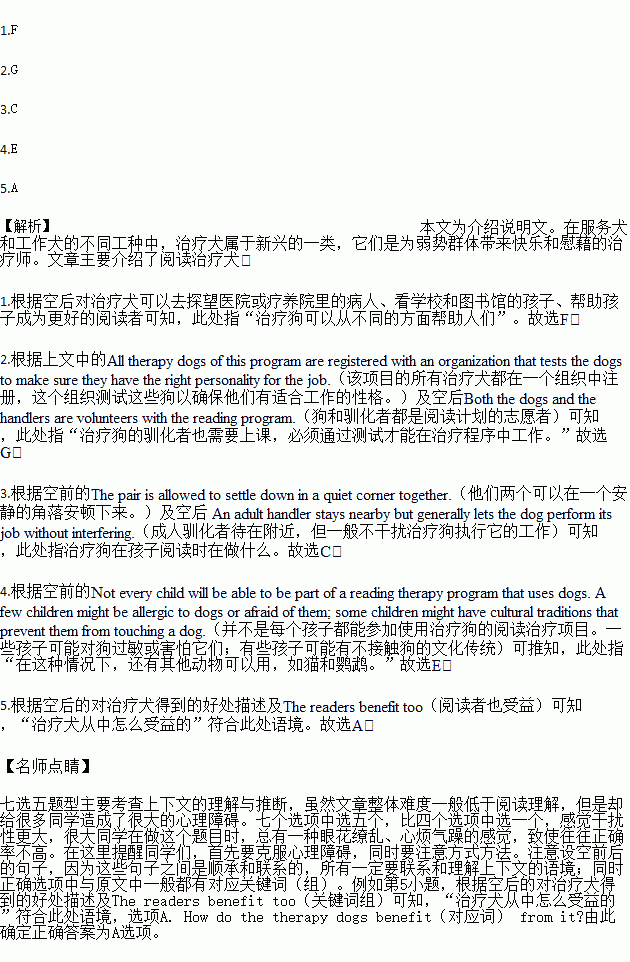题目内容
A Canine Reading Buddy
Dogs and people have developed a special bond over time. Recently, however, some dogs have taken a different role in people’s lives—therapy dogs.
1. Some therapy dogs visit patients in hospitals or nursing homes, while others visit children in schools and libraries. They are there to help children become better readers.
Reading programs that use therapy dogs have been in existence for more than ten years. All therapy dogs of this program are registered with an organization that tests the dogs to make sure they have the right personality for the job.
2. Both the dogs and the handlers are volunteers with the reading program.
At the start of a reading therapy session, a child and a dog are introduced. The pair is allowed to settle down in a quiet corner together. 3. An adult handler stays nearby but generally lets the dog perform its job without interfering(干涉). Sometimes, a handler may ask a question that encourages the child to work with the dog to help the child feel more comfortable.
Not every child will be able to be part of a reading therapy program that uses dogs. A few children might be allergic to dogs or afraid of them; some children might have cultural traditions that prevent them from touching a dog. 4.
Reading therapy programs inspire learning and change. 5. They spend time with human friends. For dogs that love human companionshiop and a quiet place to rest, being part of a reading therapy program can be a great way to spend a few hours each day. The readers benefit too, gaining confidence and learning that reading aloud can be a relaxing experience.
A. How do the therapy dogs benefit from it?
B. But therapy animals also serve in many other areas.
C. As the child reads, the dog usually lies quietly and listens.
D. When reading to an animal, some children may become relaxed.
E. In these circumstances, other animals are available, such as cats and parrots.
F. A therapy dog is more of a companion and is trained to help people in different ways.
G. A dog’s handler also takes a class and must pass a test to work in the therapy program.
 天天向上一本好卷系列答案
天天向上一本好卷系列答案 小学生10分钟应用题系列答案
小学生10分钟应用题系列答案
